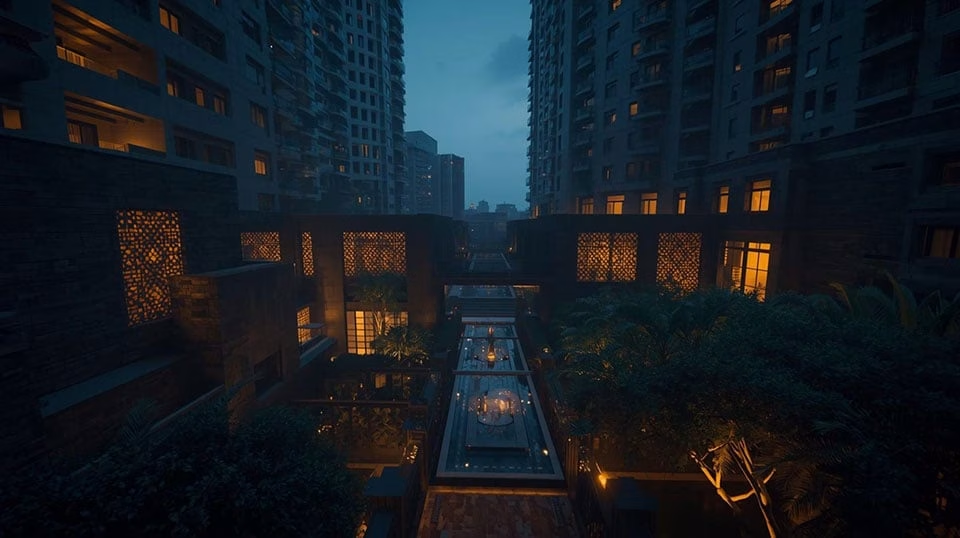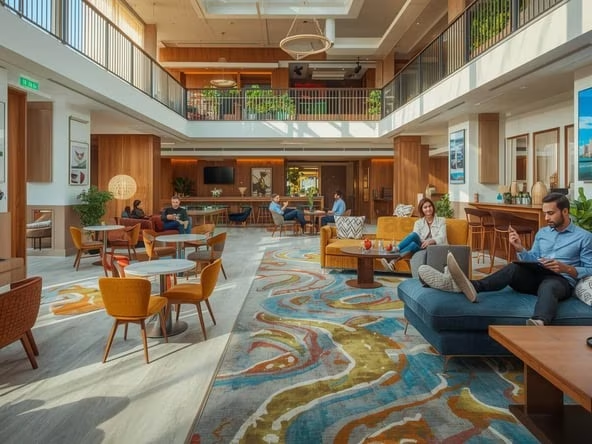Mention Dubai to almost anyone, and you’ll hear the same images: soaring towers, sparkling malls, and neighborhoods where rent costs as much as a car payment back home. It’s a city famous for its luxury—and sometimes unfairly thought of as out of reach unless you’ve got deep pockets.
But ask the people who actually live here, and you’ll discover another story. Beyond the glitz, there are communities where rents are surprisingly reasonable. These areas don’t always make it onto glossy brochures, yet they keep the city running.
Teachers, nurses, young professionals, and students all manage to carve out a comfortable life thanks to them. Finding cheap rent in Dubai is not only possible, it actually makes sense. With the right choice of area, you can cut costs and still live comfortably. Let’s look at the neighborhoods where Dubai is more affordable than most people expect.
Why Affordable Housing Matters in Dubai
Helps people live decently
Many middle-income families, expats, and workers find the cost of rent pushing them into cramped or low-quality housing. Affordable areas to live in Dubai give them a chance to stay closer to work, enjoy shorter commutes, and spend more time with family.
Keeps families, workers, and talent in the city
If rents are too high, people move far away or leave Dubai altogether. That hurts businesses and services that rely on local employees. When housing is affordable, people can stay closer to work, spend less time commuting, and be more productive.
Improves quality of life
Long commutes, heavy traffic, and paying too much for housing take a toll—stress, less time with family, and fewer options for free time. Affordable living lets you spend more time doing things you enjoy instead of worrying about rent.
Strengthens Dubai’s economy
Affordable housing supports economic growth. When more people have extra disposable income (after paying rent), they can spend more on goods, services, and education. That supports local businesses. Also, affordable housing can attract more foreign professionals and investors.
Supports social stability and fairness
If housing gets too expensive, people are pushed into sharing tiny spaces or into neighborhoods far from amenities, schools, and hospitals. Affordable housing helps reduce inequality, supports family life, and ensures people aren’t excluded just because of high costs.
Tied to planning & government policy
Dubai has plans (like its 2040 Urban Master Plan) that recognize affordable housing is essential. Without enough affordable homes, those plans—about sustainability, balanced city growth, infrastructure, transport—can’t work as well.

Top Secret Neighborhoods with Cheap Rent in Dubai
Dubai is famous for its glittering skyline, but not every corner of the city is out of reach. Tucked between the luxury towers are neighborhoods where rent is far more forgiving. These communities prove that low cost housing Dubai is available for anyone willing to look beyond the most famous districts. Tucked between the luxury towers are neighborhoods where rent is far more forgiving.
These areas don’t always appear in glossy ads, yet they’re where many people quietly find their first home in the city.
Al Nahda is one of those places. It sits close to Sharjah and is packed with schools, grocery shops, and small parks. Among the many affordable areas to live in Dubai, Al Nahda stands out for its balance of price and convenience.
Rents here are some of the lowest you’ll see—studios start around AED 25,000 a year, and one-bedroom flats go up to about AED 55,000. The buildings may be a little older, but families like the space and convenience.
In International City, you’ll notice the mix of cultures right away. The clusters—China, Persia, England—each have their own character. Apartments are simple, but very affordable. A one-bedroom often costs less than AED 45,000 a year. It’s crowded, busy, and full of life. Many new expats begin their Dubai story here.
If you want to be right in the middle of old Dubai, Deira is still a solid choice. The souks, narrow streets, and endless shops give it a unique feel. One-bedroom apartments usually stay under AED 50,000. The trade-off is older buildings and some noise, but the central location saves you both time and transport costs.
Al Qusais is another older district, with bigger apartments at lower rents. A one-bedroom can be found around AED 40,000 a year. The area is close to the airport and has strong metro links. It’s not polished or modern, but it’s practical—especially for families or anyone working nearby.
For something newer, Dubai Silicon Oasis is worth a look. The apartments here feel more modern, with better layouts and newer facilities. Prices are still on the lower end compared to the city center. One-bedroom units usually sit between AED 48,000 and 50,000 a year. It’s a little farther out, but if your job is nearby, the balance of cost and comfort makes sense.
Wherever you look, don’t just rely on online listings. Visit the building, walk the neighborhood, and check the commute at rush hour. Cheap rent only feels cheap if it actually fits your lifestyle.
Average Rent Prices in These Areas
What the Numbers Tell You
Studios in areas like International City and Deira are really affordable—good for single people or those on tight budgets.
If you want a 1-bedroom in one of these neighborhoods, expect to pay AED 35,000-45,000/year in many cases. Al Nahda and Deira are in that band.
For 2-bedrooms, the jump is noticeable. Prices go up to AED 55,000-75,000/year depending on the exact location and how modern the building is.
| Area | Studio (AED/year) | 1-Bedroom (AED/year) | 2-Bedroom (AED/year) |
| Al Nahda | ~ 30,000-32,000 | ~ 38,000-45,000 | ~ 50,000-60,000 |
| International City | ~ 22,000-28,000 | ~ 30,000-40,000 | ~ 49,000-59,000 |
| Deira | ~ 22,000-30,000 | ~ 35,000-45,000 | ~ 55,000-60,000 |
| Al Qusais | ~ 35,000-40,000 | ~ 37,000-55,000 | ~ 60,000-75,000 |
Who Should Live in These Neighborhoods?
Students
If you’re studying in Dubai, these neighborhoods are a good match. You’ll find cheap rent in Dubai, shared housing options, and easy access to public transport. Staying in places like Deira or International City can save you a lot compared to premium districts. It frees up your budget for tuition, books, or just going out.
New Expats (just arrived, on a budget)
Being new in Dubai can feel overwhelming with all the costs. Affordable areas give you a gentle landing. You’re safer from big upfront costs. You can explore the city without stressing over rent. It lets you pick work locations or neighborhoods later, once you understand your lifestyle.
Single Professionals
If you work in one part of town and don’t need a very large apartment, these areas suit you well. Low-cost housing in Dubai in places like Al Nahda or Al Qusais lets you spend less on rent and more on things you enjoy—dining out, travel, hobbies. Also, reducing your commute time matters; affordable areas close to metro stations or main roads give you that.
Families on a Budget
Families who want space but don’t want to overpay will see value here. Some of the cheaper flats are more spacious than tiny luxury studios. Neighborhoods like Al Nahda and Discovery Gardens have schools, markets, and parks nearby, which helps keep daily life easier.
Workers in Industries / Laborers
For people working in sectors where housing allowance is limited, or for laborers, areas like Muhaisnah (especially the labor-camp style housing) are realistic. They might compromise on luxury, but the priority is cheap rent in Dubai and being close to local services or workplaces.
People ready to trade luxury for practicality
If you care more about a functional apartment (clean, safe, decent amenities) than fancy finishes, these areas make sense. Maybe you’d rather live in a sturdier building, even if it’s older, than pay double for brand-new fixtures. The savings can be used for travel, savings, or investing in experiences.

Pros & Cons of Living in Budget Areas
Pros:
One clear benefit is the savings. Homes in these areas cost less, so you end up saving more every month. That means you can save money or spend it elsewhere—on food, transport, or leisure.
More space for your money. Often, older buildings offer larger flats (or multiple rooms) for less money compared to smaller luxury units.
Good sense of community. Budget areas tend to have more long-term residents, small shops, and everyday services close by. That brings connection and local flavor.
Less pressure on the wallet. Less worry about paying top dollar for finishes, designer touches, or fancy amenities. You live more simply, which can feel freeing.
Cons:
Older buildings, less polish. Expect more wear and tear, less modern design, fewer luxury amenities. Some maintenance issues might crop up.
Fewer perks nearby. If you care about trendy cafes, upscale gyms, or high-end malls, you might need to travel further.
Living farther out often means longer travel. If the metro doesn’t stop nearby or the roads are busy, you’ll spend extra time getting to work or school. You also need to watch for extra costs. Utilities, building fees, or poorly managed apartments—sometimes even overcrowded flats—can turn a cheap deal into a headache. Be sure to check these.
Tips for Finding Cheap Rentals in Dubai
- Use platforms like Homebook to compare many listings.
- Focus on less trendy neighborhoods — older blocks often mean lower rent.
- Ask about all fees (maintenance, community, bills) before signing anything.
- Negotiate the rent — especially if it’s been listed for a while, or you can sign a longer term.
- Time your move for off-peak months when landlords are more flexible.
- Visit the place in person to check the condition, noise, and transport links.
- Use the RERA Rental Index to check if rent increases or asking prices are reasonable.
- Consider shared housing or bed-space if the budget is tight.
- Be clear in your contract what is included; sometimes amenities are extra.
- Work with a registered real estate agent so you avoid scams and bad deals.

Conclusion
Dubai isn’t only glass towers and luxury towers. In between are older, livelier neighborhoods where low cost housing Dubai makes rent stay within reach. Teachers, families, and new arrivals already live there comfortably. If you’re planning a move, check these areas for yourself — you might be surprised how affordable life in Dubai can be.
Frequently Asked Questions
In shared housing, utilities are sometimes included in the rent. For full apartments, you’ll almost always pay bills separately.
Yes, absolutely. These areas are home to people from many countries, and expats often feel welcome and part of the community.
Areas like Muhaisnah, Deira, and International City usually have the lowest rents. They’re popular with workers, students, and new expats.
Al Nahda, Al Qusais, and Discovery Gardens are strong choices. They offer schools, parks, and shops nearby without luxury prices.
Choosing a budget-friendly neighborhood can cut housing costs by 40–60%. That money can go toward savings, travel, or daily living.



